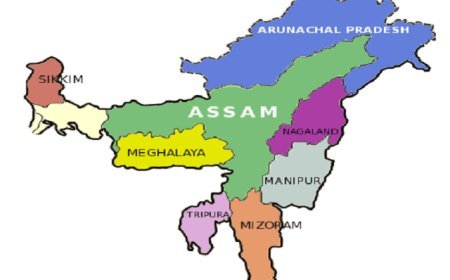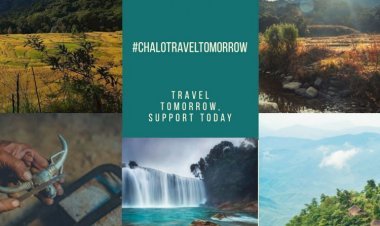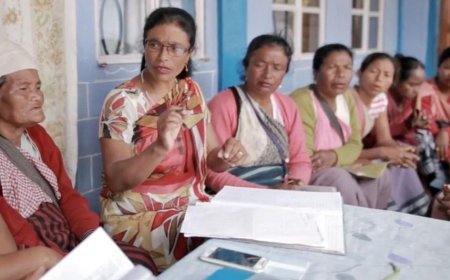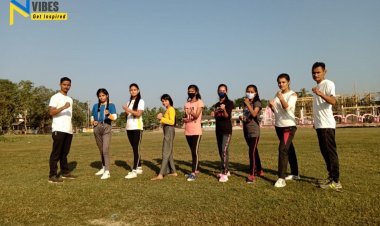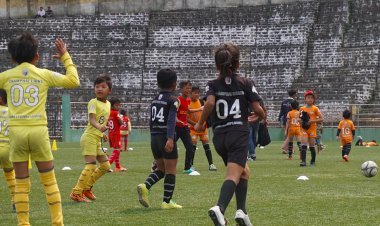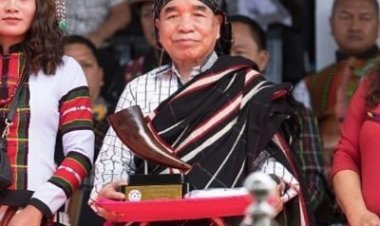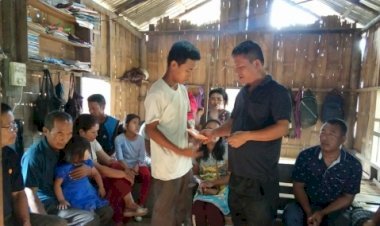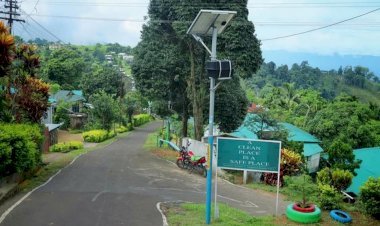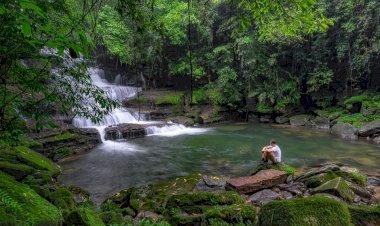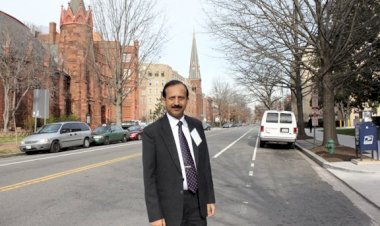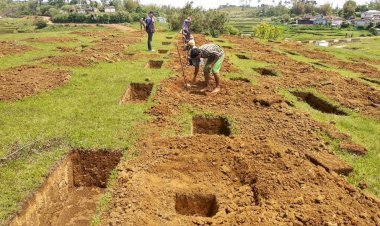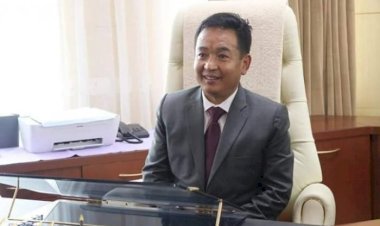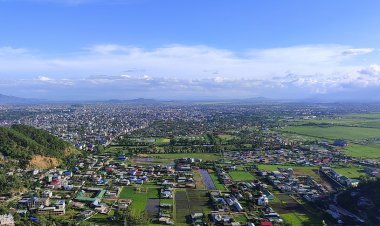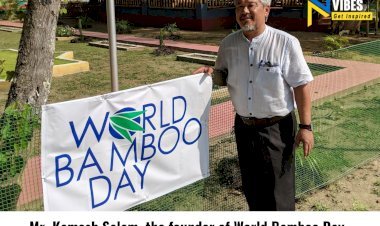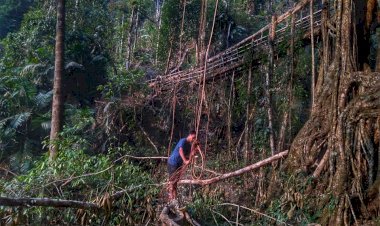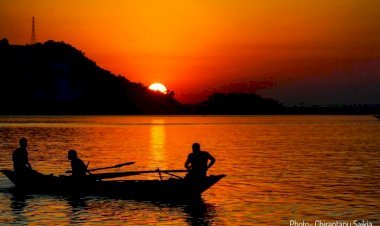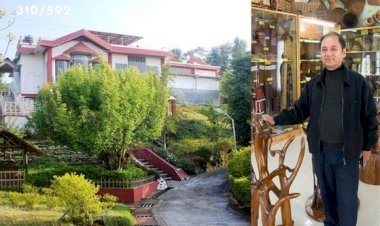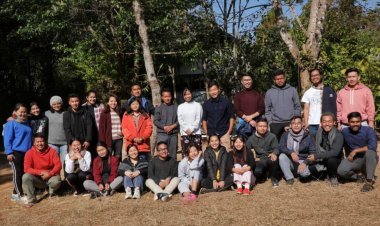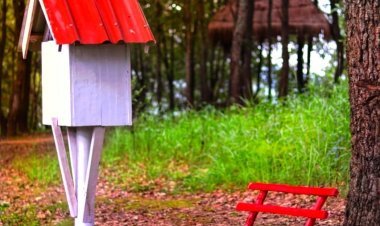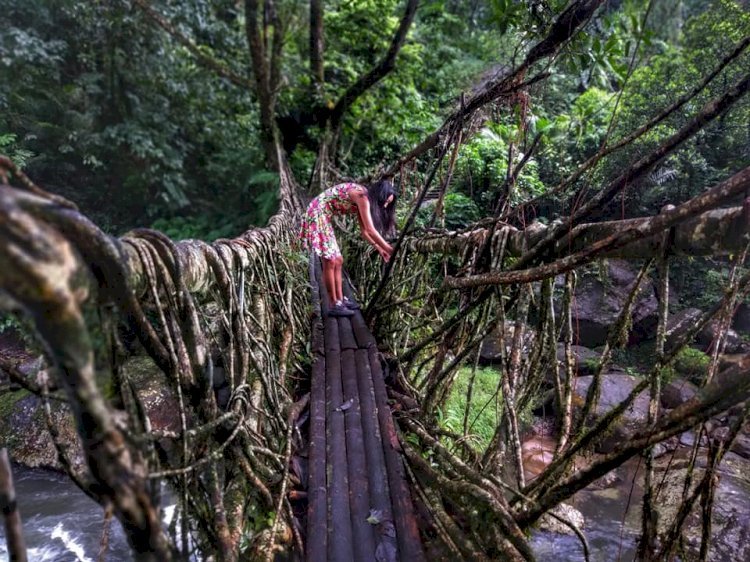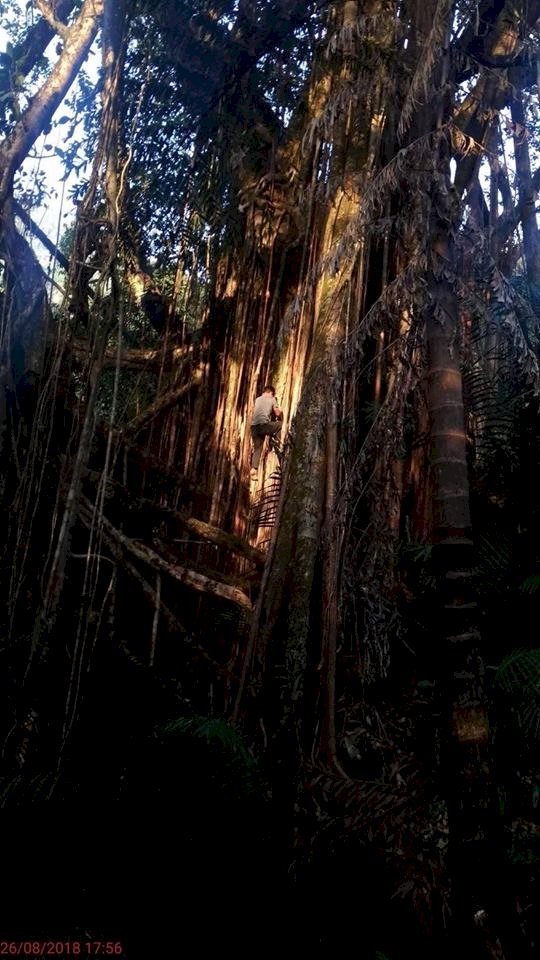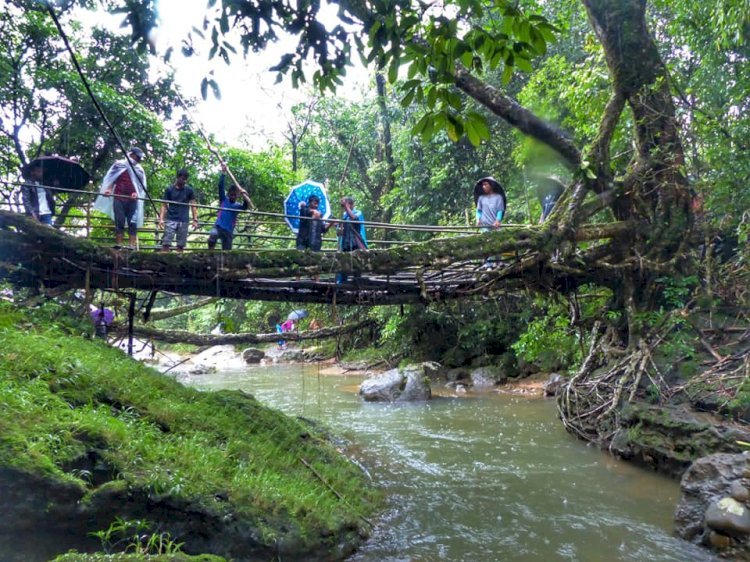Mission Possible: Meghalaya Boy on Village Trails to Promote and Build ‘Living Architectures’
It’s been more than five years since he’s fully involved and active with this selfless service through his foundation, Living Bridge Foundation. thenevibes.com
Mission Possible: Meghalaya Boy on Village Trails to Promote and Build ‘Living Architectures’
In Meghalaya, there are more than 100 living root bridges. Ever since the world came to know about the presence of this ancient living architecture, there’s been a huge inflow of tourists from across the globe to the state. While the symbolic aerial root bridges showcase the ingenuity of Khasis and their bio-engineering skills, the most exposed bridges have come under severe threat overburdened by uncontrolled tourists inflow, and no maintenance of the bridges.
It is when the local traveller and backpacker in his early 20s, Morningstar Khongthaw sees the need to step in and act to preserve and protect the gift of the forefathers. He calls himself Living Bridge Activist, and has been travelling from one village to another running campaign, raising awareness, imparting the ancient skill and art of building these sturdy root bridges, which were used by the forefathers to cross streams and rivers.
Having encouraged by an American traveller, Patrick Rogers, who came to Meghalaya in 2014, it’s been more than five years since he’s fully involved and active with this selfless service through his foundation, Living Bridge Foundation. The neVibes caught up with him to learn more about his amazing work.

Morningstar Khongthaw
Thanks Morningstar Khongthaw for speaking to The neVibes. It seems you are a school dropout by choice, and always wanted to devote yourself to preserve the unique cultural heritage of Meghalaya - Living root bridges! Tell us about the experience that led you into the living root bridge activism.
I lived in Rangthylliang village, Meghalaya. Since 2014, I have worked with the local people of Khasi & Jaintia community. I was born in a village where we have numerous living root bridges, which our elders and forefathers had preserved for hundred of years. So maintaining the living root bridges is a habit for us. But it happens in 2015, I travelled to some nearby place where they were promoting tourism (I will not mention the name of the place). I want to promote my place that's why it’s important to learn from others who have started, unfortunately I got to see the unhappiest things - the bridge is cracked and not strong enough to hold people standing due to uncontrolled footsteps of tourists coming to visit the bridge.
It is then I realised I must do something to protect and control the footfall of visitors. Therefore, I started an initiative called Living Bridge Initiatives to protect and maintain the living root bridges throughout Meghalaya. Not only in terms of tourism, but also to take care of the artificial development from the government that has created a threat to these bridges.
Living root bridges is my identity.
Several researchers believe that living root bridges can last 500-600 years. How are you so convinced these bridges can last forever?

Repairing the bridge with the villagers
Living Root Bridges can live forever, here's the reason. If you maintain the tree and the bridge, the roots will keep growing and multiply their branches to strengthen the bridge. When we see the tree is becoming old and can't produce new roots, we plant a young ficus tree on top of branches so as to support the life of the old tree and you will see the bridge still strong and produce roots. We can say the bridge will die or dying if we're not doing any maintenance or repair for years.
What are the steps taken by The Living Bridge Foundation to promote sustainable tourism around the living root bridge?
Living Bridge Foundation is an organisation in Meghalaya that works for conservation of ancient heritage traditional knowledge and practices along with the environment. It was established in 2018 after the Living Bridge Initiative. I'm the founder and Chairman of this foundation. Currently, there are 12 members in our foundation.
Through this Foundation, we have started various programmes in the state.
1) Awareness and meetings with respective villages
2) Living Bridge Campaign
3) Building Bamboo Bridges
4) Program for Maintenance and Repairing old Bridges

Tourists are involved in maintaining these bridges
We still have a long journey ahead, and we wish to reach out to remotest villages. Members of the foundation contribute on their own to run these initiatives. Also, we promote these places by organising a Root Bridge Trek as part of eco-tourism initiative. We do involve other tourists in maintaining these bridges.
How long does it take to build a living root bridge? Please take us through the processes involved.
Building Living Root Bridges is the longest project in terms of infrastructures. First, you have to plant a young ficus near the river side, let the tree grow and multiply its roots from the branch and the roots. After you see that the roots are growing and increasing in length, you can pull out from the branch and connect to the other sides of a river or streams where you aim to build a bridge. Nurture the young roots with bamboo and frame the shape of a bridge. Then, we pull multiple roots and intertwine each other. By doing this, gradually after 25-30 years the bridge becomes functional. The older the bridge, the stronger it is. Also, it involves the participation of everyone as a community to protect and maintain the bridge.

How has been the support from the government, if any? What is the kind of support you expect in preserving this unique heritage of Meghalaya?
Well I would say, till now there is no specific fund from the government for conservation project of living root bridges with regard to building bamboo bridges or repairing these bridges. What we are doing are on our own efforts and funds or contributions from our friends. Technical University of Munich is the main support for the initiatives since 2018.

Living Root Architectures
The government contributed for the 1st Anniversary (20\07\2019) of the Foundation during which, we recognised about 19 people who had conserved the living root bridges in their respective villages.
The government is like our mother. We want the government to recognise the people at the ground level who work hard for many years in conserving these bridges. We want the government to support these initiatives by the foundation and help us spread to the entire state of Meghalaya. We want the government to come and meet the community to understand the villages especially in terms of developing these places. These are a few important points to start with.
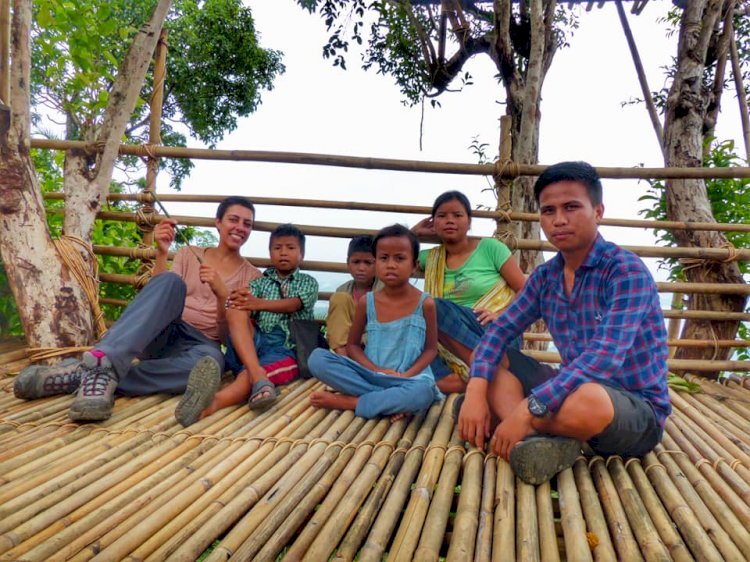
A Happy Traveller
Any message for people from outside Meghalaya?
Let’s work, learn and share together. We want the people who visit our bridges to come and learn, not just to come and take a selfie on the bridges. We want you to understand how much living root bridges mean to us and to our culture. We want you to share the beauty and to spread the work we are doing. Please respect our culture, respect our nature.
Let’s act as living root bridges.
Morningstar is not only helping in building and maintaining these bridges, but also applying the same technique to build ‘living architectures’ such as ladders, swings, bamboo bridges, seating platforms, tunnels in the forests using what is bestowed by nature, and nothing artificial.
He also has started an eco-tourism initiative called, Travel to villages of Meghalaya, promoting the remote and unexplored villages of Meghalaya. The initiative is all about Travel, Learn, Serve. This gives an opportunity for the travellers to mingle with the villagers. As a traveller, you can stay, eat, laugh, play, and help in the daily work of the locals. You can learn their culture, their living style, savour their simple ethnic food, learn the techniques of building the living root bridges and other architectures, and totally be in the midst of nature.
If his work excites you, get in touch with him here







